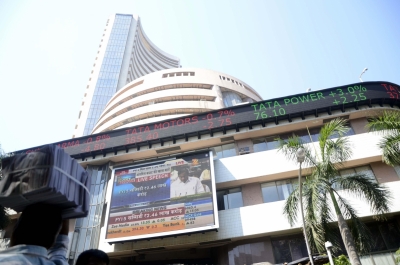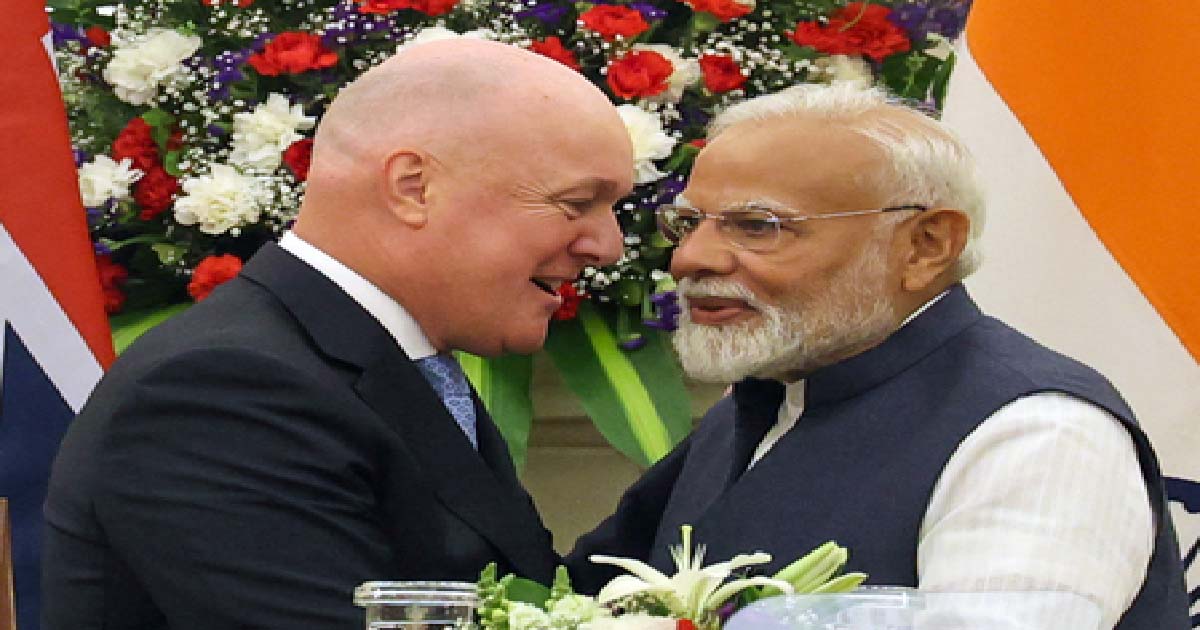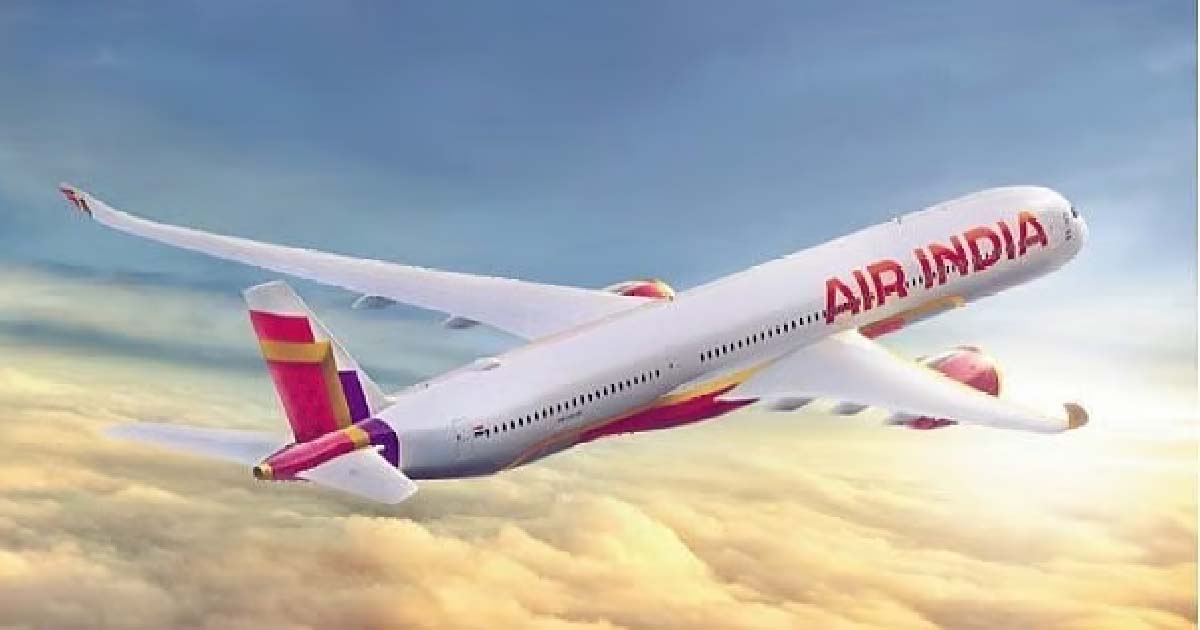Business
Markets at make-or-break stage

It was a tough week for markets in India and the world. Interest rates were raised in the US on expected lines and the commentary post the meeting were not enough to soothe the nerves.
The week saw markets gain on two of the five trading sessions. The fall on Thursday followed by yet another fall on Friday, broke the camel’s back and markets will have to do a lot to change the current momentum.
BSESENSEX lost 843.86 points or 1.36 per cent to close at 61,337.81 points while NIFTY lost 227.60 points or 1.23 per cent to close at 18,269 points. The broader indices saw BSE100, BSE200 and BSE500 lose 1.32 per cent, 1.28 per cent and 1.15 per cent respectively. BSEMIDCAP was down 1.37 per cent while BSESMALLCAP lost 0.14 per cent. All the sectoral indices on BSE lost ground during the week.
The Indian Rupee was under pressure and lost 60 paisa or 0.73 per cent to close at Rs 82.87 to the US dollar. Dow Jones lost on three of the five sessions and gained on two. What is interesting to note is that it lost on the last three days consecutively after the FED raised interest rates. Dow Jones lost 556 points or 1.66 per cent to close at 32,920.46 points.
The FED raised interest rates by 50 basis points on expected lines and the current rate band is 4.25 per cent – 4.50 per cent. They have indicated that the rates are projected to rise by a further 75 basis points in the calendar year 2023.
In primary market news, there was one listing, three IPOs which opened and closed their subscription during the week and two IPOs which would be tapping the markets in the coming week.
Shares of Uniparts India Limited which had tapped the capital market with its offer for sale listed on Monday, the 12th of December. The listing price was Rs 575 against the issue price of Rs 577. Shares closed at the end of listing day at Rs 539.55, a loss of Rs 37.45 or 6.49 per cent. They recovered during the rest of the week and closed at Rs 570, a loss of Rs 7 or 1.21 per cent.
The offer for sale from Sula Vineyards Limited was subscribed 2.33 times overall. The QIB portion was subscribed 4.13 times, HNI 1.51 times and Retail portion 1.65 times. There were 2.65 lac applications in all. The price band of the issue which was open from Monday the 12th of December to Wednesday the 14th of December was Rs 340-357.
The second issue was from Abans Holding Limited which was subscribed 1.10 times overall. The QIB portion was subscribed 4.10 times, HNI portion was subscribed 1.48 times and Retail portion was subscribed 0.40 times. This issue had a different allocation with QIB portion at 10 per cent, HNI at 30 per cent and Retail at 60 per cent. There were 46,711 applications. The price band of the issue was Rs 256-270 and the issue was open from Monday, the 12th of December to Thursday, the 15th of December.
The Third issue was from Landmark Cars Limited which consisted of a fresh issue and an offer for sale in a price band of Rs 481-506. The issue was subscribed 3.22 times overall with QIB portion subscribed 9.17 times, HNI portion subscribed 1.38 times and Retail portion subscribed 0.61 times. There were 64,480 applications. The issue was open between Tuesday the 13th of December and Thursday the 15th of December.
The first issue to open in the week ahead is from KFIN Technologies Limited which is tapping the capital markets with its offer for sale of Rs 1,500 crore. The price band of the issue is Rs 347 – 368. The issue opens on Monday, the 19th of December, and closes on Friday, the 21st of December. The company KFIN is a technology driven financial services platform, providing comprehensive services and solutions to the capital markets ecosystem. The company began its operations in 1985 with an issuer solutions business. It added domestic mutual fund business solutions in 1995 and alternative and wealth management business solutions in 2010. In 2017 it launched its pension services business and international business solutions business in South East Asia. In 2018, General Atlantic bought out the company. Just recently in the current year 2022, the company bought Hexagram, a fund accounting system to add to the offerings and increase the wallet share of business.
The company has competition from CAMS in the mutual fund business and with Link Intime in the RTA business for the capital markets. While there are other players as well, this is a duopoly business in the two verticals mentioned. What is a key metric is the fact that more than 99 per cent is repeat or retained business which comes from the same set of clients. In other words, the stickiness of clients is very high. Gross margin is a more than healthy 60.19 per cent.
Coming to the financials of the company, revenues reported for the year ended March 22 were at Rs 639.50 crore and restated profit after tax was at Rs 148.55 crore. The breakup of revenue was 67.75 per cent from domestic mutual fund business and 13.38 per cent from issuer solutions business. The EPS on a fully diluted basis was Rs 9.36. The PE multiple at the price band is 36.76-38.77. The PE multiple for the competitor CAMS is almost similar at 39.37. NAV for KFIN is Rs 38.45 while it is Rs 132.43 for CAMS. Clearly the issue price in terms of PE is more or less similar in both cases while in terms of price to book, the same for CAMS is substantially higher compared to KFIN.
The past of KFIN has been a bit shady with the erstwhile promoter’s shareholding (around 12 per cent) being impounded and frozen by the ED. The company had reported losses in FY 21 and hence the issue is 75 per cent reserved for QIBs, 15 per cent for HNIs and 10 per cent for Retail. The issue is more than richly valued and finding immediate money on listing seems a tall order.
The second issue which opens on Tuesday, the 20th of December, and closes on Thursday, the 22nd December, is from Elin Electronics Limited. The issue consists of a fresh issue of Rs 175 crore and an offer for sale of Rs 300 crore. The price band of the issue is Rs 234-247. The company is an electronics manufacturing services company of end-to-end product solutions for major brands of lighting, fans and small kitchen appliances in India. It is also the largest fractional horsepower motor manufacturer in India. It is also a key player in the LED lighting and flashlight manufacturing business. It has marquee clients with whom the relationship is over many years and decades.
The company reported revenues of Rs 1,093.75 crore for the year ended March 22 which had grown from Rs 862.37 crore in the previous year. The profit after tax was Rs 39.14 crore in March 22 against Rs 34.85 crore. In the six months ended September 22, revenues have grown to Rs 577.16 crore and profit after tax to Rs 20.66 crore. The EPS for March 22 is Rs 9.59. At this price, the PE band is 24.40-25.76. The band looks attractive. There is one catch however. This business has lower EBITDA and Net margins because of the nature of the business. This company averages net margins of between 3.5-3.75 per cent. Going forward, there could be some improvement depending on the amount of business that they do on ODM (own design manufacture).
There is plenty of activity in the grey market in this share which gives ample opportunity for gains on listing. The share looks attractively priced for the medium term as well.
Coming to the markets in the week ahead, very clearly the momentum has broken and markets have a tough time ahead of them. They have to begin their upward journey in a day or two, failing which it would mean that the tops in the short term have been done and we would only see corrective up-moves if any. If markets do move up, then depending on the strength of the rally they may attempt to challenge the previous highs and attempt to cross 63,300 and 18,900 on the indices. Any move past these levels could see markets gain another 1-2 per cent from these levels but accompanied with huge volumes. If however they fail, there could be a slow and gradual slide of anywhere between 3-5 per cent over current levels.
As mentioned last week, we are at the stage that market direction unless accompanied with huge volumes would be incorrect and misleading. Direction of market whether up or down would have to be accompanied with volume. During the sharp fall last week on Thursday and Friday, that was not the case. There is hope left for a rally as yet.
The strategy would be to look for volume breakout in the markets. It would decide the trend. Santa Claus rally if it has to happen should begin in the coming week as time runs out in the year 2022. Trade cautiously as FII’s would look to take a short break before the New Year 2023 begins.
Trade cautiously and look for volume breakout.
(Arun Kejriwal is the founder of Kejriwal Research and Investment Services. The views expressed are personal)
Business
India-New Zealand FTA: PM Modi, Luxon aim to double bilateral trade over 5 years

New Delhi, Dec 22: Prime Minister Narendra Modi held a telephone conversation with New Zealand’s Prime Minister, Christopher Luxon, on Monday as the two leaders jointly announced the successful conclusion of the historic, ambitious and mutually beneficial India-New Zealand Free Trade Agreement (FTA).
During the conversation, both leaders expressed confidence in doubling bilateral trade over the next five years as well as an investment of $20 billion in India from New Zealand over the next 15 years.
The negotiations began in March this year and the two leaders concluded the FTA in a record time of nine months, reflecting the shared ambition and political will to further deepen ties between the two countries, according to a statement from Prime Minister’s Office (PMO).
“The FTA would significantly deepen bilateral economic engagement, enhance market access, promote investment flows, strengthen strategic cooperation between the two countries, and also open up new opportunities for innovators, entrepreneurs, farmers, MSMEs, students and youth of both countries across various sectors,” said the statement.
The leaders also welcomed the progress achieved in other areas of bilateral cooperation such as sports, education, and people-to-people ties, and reaffirmed their commitment towards further strengthening of the India-New Zealand partnership.
This historic FTA eliminates and reduces tariffs on 95 per cent of New Zealand’s exports – among the highest of any Indian FTA – with almost 57 per cent being duty-free from day one, increasing to 82 per cent when fully implemented, with the remaining 13 per cent subject to sharp tariff cuts.
It puts New Zealand exporters on an equal or better footing to our competitors across a range of sectors and opens the door to India’s rapidly expanding middle class, according to an official statement from New Zealand.
“The Indian economy is forecast to grow to NZ$12 trillion by 2030. The India-NZ Free Trade Agreement unleashes huge potential for our world-class exporters to the world’s largest country and will significantly accelerate progress towards New Zealand’s ambitious goal of doubling the value of exports over 10 years,” it added.
Business
Mumbai-Bound Air India Flight Returns To Delhi Airport Minutes After Take Off Due To Technical Glitch

New Delhi: A Mumbai-bound Air India flight AI887 returned to the Delhi Airport minutes after take-off due to a technical issue. The Delhi–Mumbai flight made an emergency landing according to standard operating procedure.
As perv an Air India spokesperson, the aircraft (Boeing 777) landed safely at Delhi, and the passengers and crew disembarked.
The Boeing 777 suffered an engine issue soon after take-off, reported The Times of India. The aircraft reportedly took off at 6.10 am and returned to the airport at 6.52 am. The aircraft is currently undergoing necessary checks.
As per the report, the airline arranged another B777 (VT-ALP) for passengers and even provided refreshments for them.
On Sunday, over 100 flights were cancelled from the Delhi Airport due to dense fog conditions in the national capital. Meanwhile, more than 400 flights were also delayed at the airport.
Over the past few days, most parts of the nothern and northwestern regions of the country are witnessing dense fog condition.
“Dense to very dense fog conditions during night/morning hours very likely in some parts of Uttarakhand, Uttar Pradesh, Haryana till morning hours of 21st; in isolated pockets of Punjab, Haryana during 25th-27,” the India Meteorological Department (IMD) had said in its press statement on Sunday.
On Friday also, an Air India flight travelling from Mumbai to Varanasi was forced to make an emergency diversion to Bhubaneswar after deteriorating weather conditions made landing at the destination airport unsafe. The aircraft landed at Biju Patnaik International Airport (BPIA) as a precautionary measure, airline officials confirmed.
Business
Sensex, Nifty open in green zone amid positive global cues

Mumbai, Dec 22: Indian benchmark indices opened in green zone on Monday, breaking the last week’s trend of edging lower, amid strong buying in the US and China markets.
As of 9.30 am, the Sensex advanced 507 points, or 0.60 per cent, at 84,436 and the Nifty added 165 points, or 0.64 per cent to 26,132.
The broad cap indices performed in line with the benchmarks, with the Nifty Midcap 100 up 0.58 per cent and the Nifty Smallcap 100 adding 0.51 per cent.
Hindalco, Tech Mahindra and TCS were among the major gainers in the Nifty Pack, while losers included Asian Paints, Bajaj Finance, Max Healthcare and Cipla.
All the sectoral indices on NSE were trading in the green with metal, IT and media being the major gainers — up around 1.48, 1.23 and 0.77 per cent, respectively.
Analysts noted that market is likely heading for a year-end rally. The rupee’s sharp reversal and FIIs’ cash market purchases can accelerate this rally, as they lead to short covering, pushing benchmark indices higher. The Goldilocks domestic economic set up and potential earnings growth uptrend can support a market upturn, they added.
The US markets ended mostly in the green zone on the last trading day, as Nasdaq advanced 1.31 per cent, the S&P 500 edged up 0.88 per cent, and the Dow moved up 0.38 per cent.
As investors parsed China’s central bank keeping loan prime rate steady, Asia-Pacific markets rose on Monday.
The People’s Bank of China maintained its 1-year and 5-year loan prime rates steady, which affects most new and outstanding loans and mortgages.
In Asian markets, China’s Shanghai index advanced 0.64 per cent, and Shenzhen dropped 1.36 per cent, Japan’s Nikkei edged up 1.75 per cent, while Hong Kong’s Hang Seng Index added 0.29 per cent. South Korea’s Kospi added 1.72 per cent.
On Friday, foreign institutional investors (FIIs) sold equities worth Rs 2,387 crore, while domestic institutional investors (DIIs) were net buyers of equities worth Rs 5,200 crore.
-

 Crime3 years ago
Crime3 years agoClass 10 student jumps to death in Jaipur
-

 Maharashtra1 year ago
Maharashtra1 year agoMumbai Local Train Update: Central Railway’s New Timetable Comes Into Effect; Check Full List Of Revised Timings & Stations
-

 Maharashtra1 year ago
Maharashtra1 year agoMumbai To Go Toll-Free Tonight! Maharashtra Govt Announces Complete Toll Waiver For Light Motor Vehicles At All 5 Entry Points Of City
-

 Maharashtra1 year ago
Maharashtra1 year agoFalse photo of Imtiaz Jaleel’s rally, exposing the fooling conspiracy
-

 National News1 year ago
National News1 year agoMinistry of Railways rolls out Special Drive 4.0 with focus on digitisation, cleanliness, inclusiveness and grievance redressal
-

 Maharashtra1 year ago
Maharashtra1 year agoMaharashtra Elections 2024: Mumbai Metro & BEST Services Extended Till Midnight On Voting Day
-

 National News1 year ago
National News1 year agoJ&K: 4 Jawans Killed, 28 Injured After Bus Carrying BSF Personnel For Poll Duty Falls Into Gorge In Budgam; Terrifying Visuals Surface
-

 Crime1 year ago
Crime1 year agoBaba Siddique Murder: Mumbai Police Unable To Get Lawrence Bishnoi Custody Due To Home Ministry Order, Says Report












